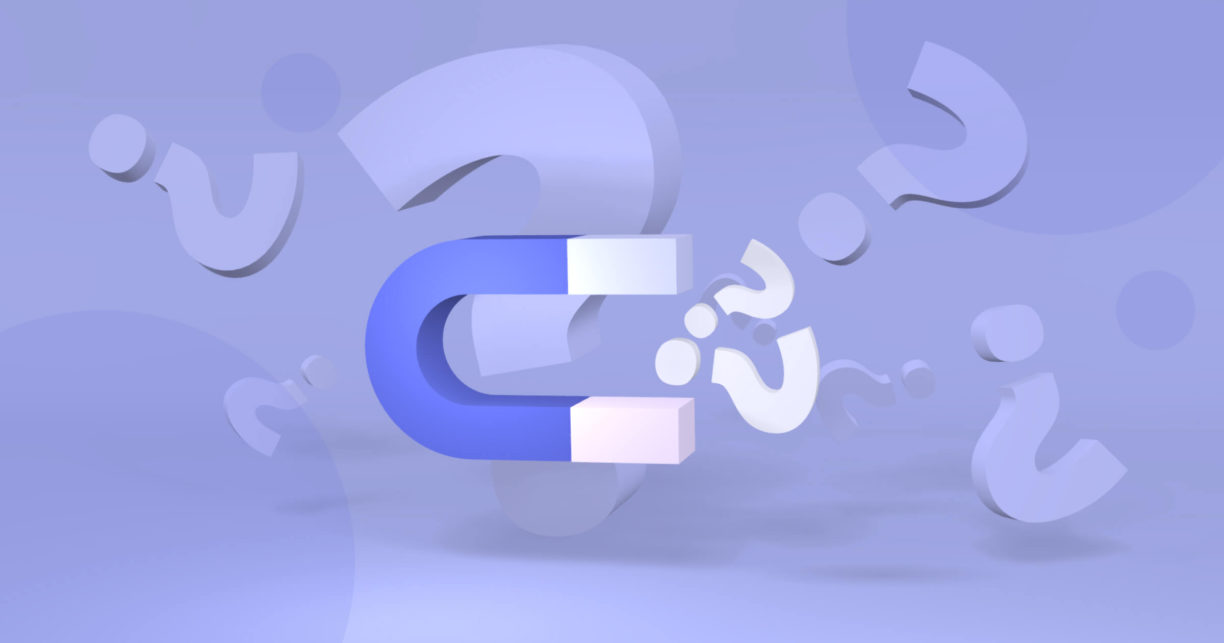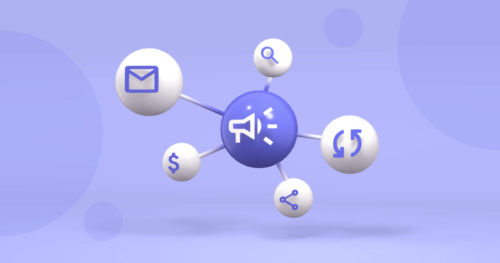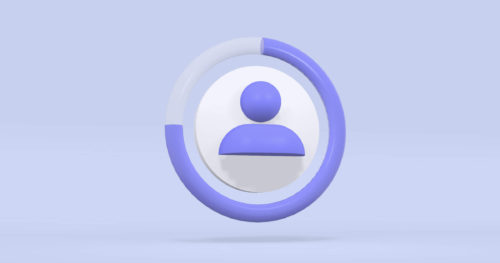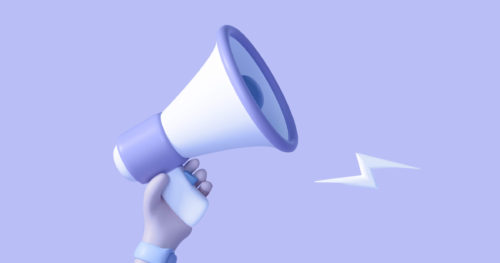What business will say “no” to more paying customers or clients?
However, the hard truth about marketing in recent times is allocating more and more marketing spending, to engage customers who are increasingly becoming harder to please.
Does this mean businesses should give up? Of course not.
By having a revenue-driven strategy in place, businesses can attract customer attention, gain more loyal customers, and improve their lead generation and conversions.
In this article, you’ll learn the fundamentals of customer acquisition marketing, successful acquisition marketing strategies, and how to develop a customer acquisition marketing strategy so profound that it’ll stand the test of time and the dynamic trends of the market.
What is Customer Acquisition?
Customer acquisition is the process through which you attract new prospects, customers, or consumers and make them loyal to your business.
This process aims to establish an organized strategy to increase the revenue generation for your business. This is part of a company’s digital marketing strategies that have to be able to stand the test of time.
Besides boosting your revenue, it also proves to investors, partners, influencers, and clients that your business is booming.
You need successful acquisition marketing to attract more customers to your business and make them stay with your brand.
What is Acquisition Marketing?
Acquisition marketing is the implementation of specific techniques to sell your products and services to audiences or visitors and convert them into new consumers.
Acquisition marketing is distinct from other forms of marketing in that it concentrates on consumers or leads who are aware of your brand and are considering purchasing something. These customers are in the consideration pool.
You may bring more leads into your sales and marketing process by capturing their interest and converting them into paying customers through your customer acquisition funnel.
Foremost, an acquisition marketing strategy is the techniques and plans you utilize to help boost customer acquisition.
Example
The referral program is one of the most common client acquisition marketing tactics.
A referral program is a form of word-of-mouth marketing that encourages clients to promote your company.
Referral programs allow customers to share their brand experience with partners, colleagues, and friends rather than posting online reviews or completing customer feedback surveys.
The essence of a referral program is to bring in new leads for your company. However, you’re not bringing in just anyone. Customers will recommend leads who are a good fit for your business if you ask them to think of people who will benefit from your product or service.
Don’t forget to reward your existing customers for their referrals.
Referral incentives have long been proven to enhance referral rates. Referral awards or inducements, whether as a discount, a free month of service, or anything of value, will give customers a compelling reason to tell others about your company.
A good example is Airbnb: Customers who refer a friend receive a $20 credit, and customers who sign up receive credit for their first vacation over a specific amount.
Now, let’s proceed to talk about customer acquisition channels.
What are Good Channels to Get More Clients?
Acquisition channels are the first medium or channel you encounter with your customers.
This section will examine different customer acquisition channels you can leverage for your customer acquisition strategies.
To choose the right marketing channels for your business, you’ll need first to examine your competition and know what they’re doing, discover where your competition is deficient in their strategies, and clearly define your goals and objectives for your business.
Furthermore, you can begin with a maximum of three critical channels because quality takes precedence over quantity.
To make this easier, you can introduce new acquisition channels one at a time and compare them to what’s already functioning.
Juggling many acquisition techniques might make getting through the clutter and noise difficult. For your Facebook or PPC strategy to generate clicks and conversions, tweaking may take several weeks.
Customer acquisition channels you can leverage include:
1. Your Own Website
A website is one of the most common ways to attract new clients. According to one survey, 88 percent of businesses use their website for customer acquisition. There’s no end to what you can accomplish with your website, from delivering great information to new leads to giving more value to old consumers.
To help your site rank better in search results, improve its SEO. Because most people conduct a Google search before making a large purchase, keeping your site current and free from errors can benefit your business.
2. Content Marketing
For all types of businesses, content marketing is an efficient acquisition strategy. Creating fresh, engaging, relevant, and high-quality content is a powerful approach to capturing your audience’s attention and directing them to your website.
3. Blog
A blog benefits your brand in a variety of ways. Because search engines prefer sites that are updated often, adding a fresh blog post regularly will help you stay competitive in search results. You may also utilize your blog to grow an email list, nurture prospects, and keep your brand significant in people’s eyes.
Include a blog section on your website. Avoid overly promotional postings by creating a topic hierarchy based on your target audience’s interests. The more you tailor your blog to solve your audience’s concerns and provide value; your readers will likely become customers.
4. Email Marketing
Email is a timeless marketing tool, and it can also aid the retention of current customers by keeping your brand fresh in the thoughts of those who receive it.
To begin creating your email list, give consumers the option to “opt-in.” In exchange for their email, provide them with free resources via social media, coupons or discounts, a blog subscription, or a special offer. Ask for the customer’s email at the point of sale if you have a physical store.
5. Social Media
Social media can be one of the most profitable marketing tools for organizations, with 3.8 billion people utilizing it regularly. You can promote to your existing followers through organic posts or pay for advertisements on any main social media platforms (Facebook, LinkedIn, Twitter, Instagram, and TikTok) to reach new audiences.
Determine which social media network is best for your company and implement your acquisition strategy on it.
6. Ads
Customer acquisition via paid search marketing is one of the most common methods. Because both Google and Bing have their advertising systems, you can buy either Google Ads or Bing Ads.
While pay-per-click (PPC) search advertising is a terrific way to establish your brand online and promote awareness, they’re best used with a solid SEO plan. Other customers who have already interacted with your business and need an extra push to make a purchase will respond well to display adverts.
7. Influencer and Affiliate Marketing
Affiliates work as an expansion of your sales team, sharing product or service information with leads. They frequently market your company by utilizing content that you generate and offer. Niche-specific influencers are well-liked by your target audience and may help you sell your product or service by sharing their personal experiences with it.
Both potential affiliates and influencers have in common that they both have access to people who are likely to become your clients. They create content that your potential customers can relate with and which in turn will lead to paying customers for your brand.
What you have to do here is to identify people in your business who are well-known or well-connected. Make them a compelling offer; affiliates get a compensation (usually a percentage) for each sale they make, whereas influencers are often paid for a single social post.
How to Measure Your Results?
You must quantify and comprehend the reach and success of your acquisition marketing strategies. Unless you know whether your efforts were successful or not, you won’t be able to improve in the future or recognize what is not working.
Here are some of the most useful Key Performance Indicators for measuring acquisition marketing:
1. Customer Acquisition Costs (CAC):
Customer acquisition costs (CAC) are the cost of acquiring a new customer or client for your business, including marketing costs, campaigns, and ad costs. It’s typically estimated for a single campaign or period.
CAC is crucial because it gives your marketing efforts a monetary value and allows you to track your ROI – a figure that CEOs regularly ask about.
How to calculate CAC
Customer acquisition expenses are computed by dividing marketing costs associated with a particular campaign or effort by the number of customers acquired from that campaign.
The CAC Formula
CAC = Marketing Cost/ Customers Acquired.
To create a more detailed and comprehensive picture of CAC, include all marketing expenditures, such as everything spent during a marketing campaign, Marketing and Sales Wages, Marketing and Sales Software, Outsourced responsibilities, and marketing and sales overhead.
For example, let’s assume your marketing cost for one quarter of 2022 is $2,000, and you acquired 200 new customers; your customer acquisition cost (CAC) would amount to $10.
How to reduce CAC?
Here are a few techniques to reduce the cost of gaining new customers if you want to enhance your CAC:
Improve the conversion rate of your website.
Improve your call-to-action buttons.
Ensure that your website is friendly to mobile devices.
Clean up your copywriting and optimize your landing pages.
Test a landing page or shopping cart to evaluate if a given design or copywriting perspective performs better.
2. Customer lifetime value (CLV, or LTV):
This metric shows how much money a company can expect from a single customer account throughout the relationship.
It’s crucial because it can help you increase client loyalty and customer retention, grow income over time, target your ideal consumer, and lower customer acquisition expenses.
Other methods
Rate of visits
Increase in Revenue
Client acquisition
Lead percentage
Number of Visits
Fresh Sales/Offers
Quantity of Clicks or Impressions
6 Ways to Improve Your Acquisition Strategy
Here are seven suggestions for attracting loyal clients and ensuring your company’s long-term success.
1. Recognize your target audience
Any business must conduct customer research, and it’s crucial for identifying your best and most profitable customers.
These customers can’t get enough of your goods. They read every email, visit new product pages regularly, and leave glowing reviews on your website.
You’ll have a better idea of your ideal customer once you understand them. This can be done by directly interviewing them. You can also use keyword research to create content that attracts the people you want to attract. Another way to identify your target audience is by analyzing their behavior on your website using customer data. This allows you to gauge what messaging resonates with them, and which channels they use to get your message across.
2. Use a direct-to-consumer strategy
Brands that use direct-to-consumer (DTC) channels benefit from engaging directly with customers rather than going through a third-party channel.
Owned channels – like a blog or a newsletter – are essential for establishing a personalized customer experience because the DTC model is based on personal relationships with customers.
A DTC company owns all data a client contributes on the site, including their email, likes/dislikes, and more, which can help businesses develop more real and long-term relationships with customers.
Even better: you can better identify your ideal customer to target through paid advertising channels with all of that information.
3. Build personal relationships
After interacting with a potential consumer, they may delay buying for days, weeks, or even months. This is the ideal time to build a relationship between your brand and your potential customer.
Creating automatic email flows for new subscribers who haven’t purchased yet, is a terrific approach to expanding your personalized marketing efforts.
Want to take personalization to the next level? Then you must better understand your clients’ demands. To achieve this, don’t be scared to ask them questions.
4. Share customer stories
A customer story is an entertaining article or post that includes statements from a satisfied client or customer complimenting your work. Including customer stories or testimonials in your campaign can significantly increase lead conversion.
5. Target abandoned carts
Cart abandonment, or when a consumer leaves the site without purchasing the products in their shopping cart, is one way to convert new customers who visit your company.
You can develop a survey to obtain feedback from visitors to understand their thoughts better. When a person is going to leave a website, the exit intent pop-up appears.
If consumers choose the “Items are too costly” option, they can be given a discount to encourage them to keep buying.
Even after they’ve left your site, you can automate an email sequence to re-engage them.
To boost the consumer’s chances of converting, you can also include more relevant items and customer reviews.
6. Run giveaways
Running a giveaway contest to encourage customers to share your business with their network is another strategy to attract new customers.
You can decide to have numerous winners or develop a contest with a daily winner if you want to generate excitement around a new product or line of products. This gives your clients the impression that they have a better chance of winning.
Furthermore, this strategy can lead to winners spreading their good fortune and encouraging their friends to enter as well.
Customer acquisition does not happen overnight. It takes effort to build everything from brand awareness to customer referral programs, but it’s always worth it to earn the customer.
Conclusion
Customer acquisition is vital to any business, big or small.
Customers are at the center of successful companies’ customer acquisition marketing strategies and retention strategies. If your acquisition strategy is set upright, you may expect to reduce client acquisition costs while increasing customer lifetime value.
You may also guarantee that the entire adventure is worthwhile for clients by involving several departments and customer service teams.
That means your customers will be delighted with your products and services and your entire organization, and will be more likely to return.
All these factors contribute to lower customer acquisition expenses, allowing you to expand without spending unnecessarily.
FAQs
What does acquisition mean in marketing?
Customer acquisition is attracting new customers or persuading individuals to purchase your items. It’s a method of guiding customers along the marketing and sales funnel from brand awareness to purchase decisions.



